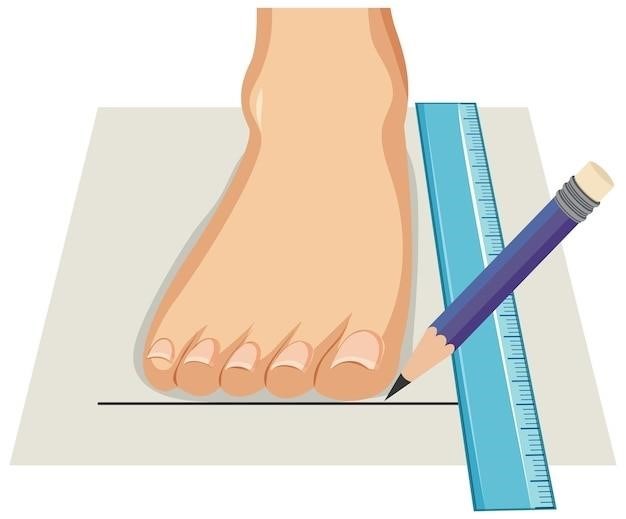
Ring Size Guide in Centimeters
Ring sizes are typically measured in millimeters, but it’s helpful to understand the conversion to centimeters. The circumference of your finger in centimeters determines your ring size, with each size increment representing a specific circumference.
Understanding Ring Sizes
Ring sizes are standardized measurements that represent the circumference of a finger. This circumference is typically measured in millimeters, with each size increment corresponding to a specific finger width. The system used for ring sizing varies depending on the country or region, with different size scales and corresponding measurements. For instance, a US ring size 7 corresponds to a finger circumference of 53.3 millimeters, while a UK ring size P corresponds to the same finger circumference. Understanding these differences is crucial when purchasing rings internationally or converting between sizing systems.
Ring sizes are not determined by the diameter of the ring, but rather by the internal circumference of the ring band. The internal circumference is the measurement of the ring’s inner circle that fits snugly on the finger. This measurement is essential for ensuring a comfortable and secure fit. Ring sizes are standardized to ensure consistency and accuracy in sizing, allowing for easy replacement or resizing if needed.
Ring Size Standards
Ring size standards are established to ensure consistency and accurate sizing across different regions and manufacturers; These standards dictate the measurement system used for ring sizes, typically in millimeters or inches, and the corresponding size increments. Understanding the different ring size standards is crucial for accurate sizing and avoiding discrepancies when purchasing rings internationally.
The most common ring size standard is the US standard, which uses a numerical system with half-size increments. This system is widely adopted in North America and is often used as a reference point for international sizing conversions. Other countries, like the UK and Europe, use different sizing systems, such as alphabetical or numerical scales with different size increments. These variations make it essential to be aware of the specific standard used when purchasing rings, especially when ordering online or from international retailers.
The ring size standards also dictate the methods used for measuring finger circumference, with common approaches including string methods, paper sizing charts, and ring sizing tools. These methods aim to provide accurate measurements for determining the correct ring size, ensuring a comfortable and secure fit.
Measuring Your Ring Size
Determining your ring size is essential for achieving a comfortable and secure fit. While professional jewelers offer accurate ring sizing, there are several reliable methods you can use at home to measure your ring size. These methods involve measuring the circumference of your finger, using tools like string, paper, or a ring sizing chart.
The most common method involves wrapping a piece of string or paper snugly around the base of your finger, marking the point where it overlaps. Measure the length of the string or paper with a ruler to determine the circumference of your finger. Alternatively, you can use a ring sizing chart, which features circles corresponding to different ring sizes. Place the ring you want to measure over the chart, identifying the circle that matches the inner diameter of the ring.
These methods provide a reliable way to estimate your ring size, but it’s always recommended to double-check your measurement with a professional jeweler, especially for important purchases like engagement rings. They can offer precise measurements using specialized tools, ensuring a perfect fit for your chosen ring.
Method 1⁚ String Method
The string method is a simple and effective way to measure your ring size at home. It requires only a piece of string, a ruler, and a pen or marker. Here’s how to do it⁚
Cut a piece of string⁚ Cut a piece of string or yarn about 3 inches long.
Wrap the string around your finger⁚ Wrap the string snugly around the base of the finger you want to measure. Ensure it’s snug but not too tight, as you want it to sit comfortably where a ring would be worn.
Mark the string⁚ Using a pen or marker, mark the point on the string where it overlaps.
Measure the string⁚ Lay the string flat and measure the distance between the end of the string and your mark using a ruler. This measurement represents the circumference of your finger in millimeters.
Convert to ring size⁚ Use a ring size conversion chart to find the corresponding ring size based on the circumference you measured. You can find these charts online or at jewelry stores.
This method is fairly accurate and can be easily repeated for multiple fingers. Remember, if your measurement falls between two sizes, it’s generally recommended to round up to the larger size to ensure a comfortable fit.
Method 2⁚ Paper Method
If you don’t have string readily available, you can use a strip of paper to measure your ring size. This method is essentially the same as the string method but utilizes paper instead. Follow these steps⁚
Cut a strip of paper⁚ Cut a long strip of paper, approximately 10 centimeters in length. You can use any type of paper, such as printer paper or even a sticky note.
Wrap the paper around your finger⁚ Wrap the paper snugly around the base of the finger you intend to measure. Ensure the paper is snug but not constricting.
Mark the paper⁚ Use a pen or marker to make a mark on the paper where the ends overlap.
Measure the paper⁚ Unfold the paper and use a ruler to measure the distance between the start of the paper and your mark. This measurement represents the circumference of your finger in millimeters.
Convert to ring size⁚ Use a ring size conversion chart to determine the corresponding ring size based on the circumference you measured.
Similar to the string method, this method is relatively accurate and can be used for multiple fingers. If your measurement falls between two sizes, it is recommended to choose the larger size for a comfortable fit.
Method 3⁚ Ring Sizing Chart
If you already have a ring that fits comfortably on the finger you want to measure, you can use a ring sizing chart to determine your size. This method relies on comparing your ring’s inner diameter to the sizes on the chart. Here’s how to do it⁚
Print a ring sizing chart⁚ You can find printable ring sizing charts online. Ensure that the chart is printed to scale (100% scale) to ensure accurate measurements.
Place your ring on the chart⁚ Carefully place your ring over the various circles on the chart, aligning the inner edge of the ring with the circle.
Find the matching size⁚ Continue moving your ring across the chart until you find a circle where the inner edge of your ring aligns closely with the circle’s circumference.
Determine your size⁚ The number corresponding to the circle where your ring fits is your ring size. If your ring falls between two sizes, it’s best to choose the larger size.
This method provides a visual comparison and is useful if you have an existing ring that fits well. However, ensure the chart is printed accurately and your ring is placed correctly for precise results.

Converting Measurements to Ring Sizes
Once you have measured your finger circumference in centimeters, you’ll need to convert this measurement to a standard ring size. This conversion is essential to ensure you order the correct size for your ring. There are two primary methods to convert your measurement⁚
Ring Size Conversion Chart⁚ A ring size conversion chart provides a direct correlation between finger circumference in centimeters and the corresponding ring size in different sizing systems (US, UK, etc.). Look for charts specifically designed for centimeter measurements to ensure accuracy.
Ring Size Calculator⁚ Numerous online ring size calculators are available. These tools allow you to input your finger circumference in centimeters and provide the equivalent ring size in various sizing systems. Choose a reputable calculator and double-check the results against a conversion chart.
Regardless of the method you choose, ensure that the conversion chart or calculator you use aligns with the sizing system you’re interested in. This will guarantee you order the correct size for your ring.
Ring Size Conversion Chart
A ring size conversion chart is a handy tool for converting your finger circumference in centimeters directly to standard ring sizes. These charts typically list finger circumference in centimeters alongside the corresponding ring sizes in different systems, such as US, UK, and European. You can find these charts online or download printable versions.
When using a conversion chart, locate your finger circumference in centimeters on the chart and look across to find the corresponding ring size in the sizing system you need. Ensure the chart is specifically designed for centimeter measurements, as some charts may use millimeters. If your measurement falls between two sizes on the chart, it’s generally recommended to round up to the next larger size, as rings that are too tight can be uncomfortable and difficult to remove.
Conversion charts provide a simple and accurate way to determine your ring size based on your finger circumference in centimeters.
Ring Size Calculator
A ring size calculator is a convenient online tool that simplifies the process of converting finger measurements to ring sizes. These calculators are often designed to work with different measurement units, including centimeters, millimeters, and even inches. You typically input your finger circumference or diameter into the calculator, and it automatically provides the corresponding ring size in the desired sizing system, such as US, UK, or European.
Ring size calculators can save you time and effort compared to manually using conversion charts. They are especially useful if you’re unfamiliar with ring sizing systems or if you prefer a more direct and precise calculation. These online tools can be found on various jewelry websites or dedicated ring size conversion websites.
When using a ring size calculator, ensure the calculator is specifically designed for the measurement unit you’re using (centimeters in this case) and the sizing system you require.
Tips for Finding the Perfect Fit
Finding the perfect ring size is crucial for comfort and enjoyment. A ring that’s too tight can be uncomfortable and even restrict blood flow, while a ring that’s too loose may slip off easily. Here are some tips to ensure you get the right fit⁚
Measure your finger at the end of the day⁚ Your finger size can fluctuate throughout the day, especially due to temperature changes or activity. Measuring your finger at the end of the day, when it’s likely to be slightly larger, will ensure a comfortable fit.
Consider ring style⁚ Different ring styles can affect fit. For example, a ring with a wide band may feel tighter than a ring with a thinner band.
Try on rings⁚ If possible, try on different sizes of rings to get a feel for what feels comfortable. This will help you determine if you need to size up or down.
Consult a jeweler⁚ If you’re unsure about your ring size or have any concerns, consult a jeweler for professional guidance. They can help you measure your finger accurately and advise on the best ring size for your needs.
Ring Size Fluctuations
It’s important to remember that finger size can fluctuate throughout the day, influencing the fit of your ring. Factors like temperature, activity level, and time of day can all play a role in these changes.
For instance, your fingers tend to be slightly larger in the evening due to increased blood flow and swelling. Similarly, your fingers can swell during hot weather or after physical exertion.
If you find your ring feels tight at certain times of day, it’s a good idea to consider getting it resized. A ring that’s too tight can be uncomfortable and even cause circulation issues.
To avoid potential problems, it’s always best to measure your finger at the end of the day when it’s likely to be at its largest. This will ensure a comfortable fit throughout the day and prevent any issues with the ring feeling too snug.
Resizing Rings
Resizing a ring is a common practice, and it’s usually a straightforward process. Most rings can be resized, but there are some exceptions, such as eternity bands, open bands, and those made from certain alternative metals.
If you need to resize your ring, you’ll want to consult a professional jeweler. They will be able to determine if your ring can be resized and how much it will cost.
The process of resizing a ring typically involves adding or removing metal from the band. The jeweler will carefully cut and solder the metal to ensure a smooth, seamless finish.
Keep in mind that resizing a ring can sometimes affect its appearance, especially if it’s a delicate or intricate design. The jeweler will be able to assess the potential impact on your ring’s look and discuss any concerns with you.
It’s always best to get your ring resized by a reputable jeweler to ensure quality craftsmanship and a proper fit. They can also provide advice on how to care for your ring after resizing.

Average Ring Sizes
Understanding average ring sizes can be helpful when you’re trying to estimate a ring size, especially if you’re buying a ring as a surprise. It’s important to remember that these are just averages and can vary widely based on individual finger size and cultural differences.
For women, the average ring size falls between 5 and 7. However, a wide range of sizes exists, and many women wear sizes outside this range. It’s always best to measure the finger accurately for a perfect fit.
For men, the average ring size typically ranges from 8 to 10. Men tend to have larger fingers than women, but again, individual variations are significant.
If you need to estimate a ring size for someone else, consider their overall build and hand size. If they have larger hands or fingers, their ring size is likely to be larger than average; Conversely, smaller hands and fingers typically correspond to smaller ring sizes.
Remember, it’s always best to measure the finger directly if possible, but using average size as a starting point can be helpful if you’re unsure.
Inclusive Sizing
In recent years, the jewelry industry has increasingly embraced inclusive sizing, recognizing that traditional size ranges don’t always cater to everyone’s needs. Inclusive sizing ensures that individuals of all sizes can find jewelry that fits comfortably and beautifully.
This shift towards inclusivity is especially significant for rings, as they are often worn on a finger that can vary greatly in size. Jewelry brands offering inclusive sizing provide a wider range of ring sizes, including half-sizes and even quarter-sizes.
Inclusive sizing also extends to ring styles. Some brands offer rings specifically designed for larger or smaller fingers, ensuring a comfortable and secure fit for everyone. This includes designs that accommodate thicker fingers, shorter fingers, or fingers with unique shapes.
As a result of this movement, individuals of all sizes can now find rings that not only look great but also fit perfectly, enhancing their confidence and joy in wearing jewelry.





No comment yet, add your voice below!